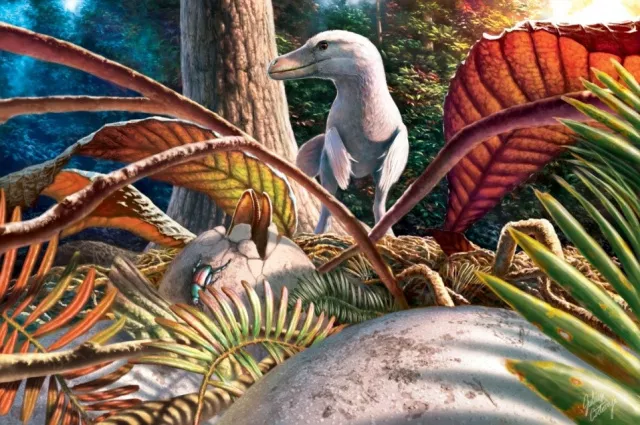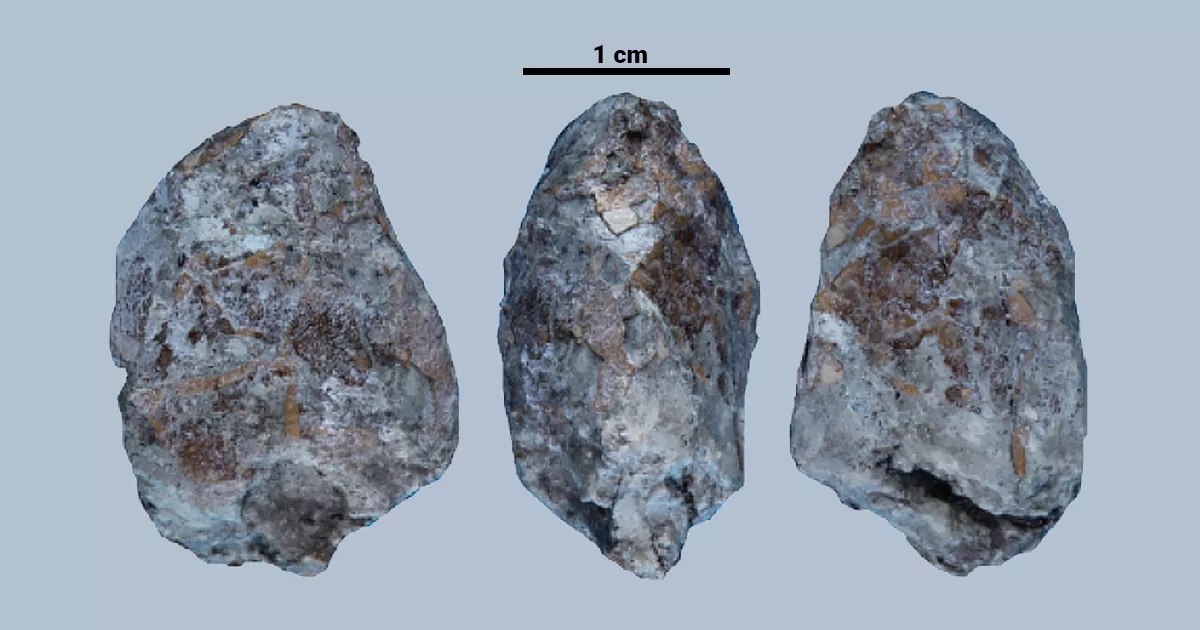A five-year international partnership led by Edina Prondvai from the MTA-MTM-ELTE Research Group for Paleontology, which is part of the ELKH's Office for Supported Research Groups, has definitively proved that the fossil found by the Lendület Program grant winner Attila Ősi at a dig in Western Hungary is indeed a fossilized dinosaur egg. A few centimeters long, extraordinarily fragmented, oval-shaped, and with a nodular surface, this fossil is the first of its kind found in Hungary. In fact, it was the first egg fragment with this type of shell found in the entire world.
-

- Reconstruction of Pseudogeckoolithus eggs and presumed egg-laying maniraptora dinosaur. Illustration: Julius Csotonyi©
The researchers succeeded in refuting a previously popular theory that held that the eggshell, which has also been found in many other European sites – and is the most common among Hungarian shell finds – comes from an extinct, gecko-like lizard. The research has shown that the resemblance of these shells to today’s gecko eggs is superficial in both the literal and figurative sense of the word – the structure of the eggs far more strongly suggest that they are the eggs of small, bird-like dinosaurs called maniraptors.
Prondvai and his colleagues first raised the issue of this type of fossil eggshell being from a maniraptor dinosaur in a study in 2017. Later, an international project led by a South Korean group – the results of which were published in early 2020 – was able to unequivocally demonstrate by studying crystal structures that these finds – previously thought to be gecko eggshells – were widespread not only in Iharkút but throughout the late Cretaceous European archipelago, and belonged to the eggs of bird-like dinosaurs or even actual birds. Fossil eggshells of this type have therefore been classified into a type of eggshell known scientifically as Pseudogeckoolithus (meaning 'pseudo-gecko stone egg').
-

- Various views of the first Hungarian, 85 million-year-old tiny dinosaur eggPhoto: Márton Szabó
These investigations revealed that Attila Ősi and his team's tiny, oval fossil was more special than they realised. "We were shocked that with this seemingly insignificant find we were holding in our hands was no less than the first fossil dinosaur egg found in Hungary," Edina Prondvai recalls. “Based on the microCT images, the partial egg unfortunately has no embryonic bone remains and is made up mainly from the sedimentary rock that fills its interior, meaning that only the cracked shell residues adhering to its surface prove its origin,” she added. The thickness of the eggshell and the structure and density of the pores suggest that the eggs were placed in a dug-out nest by the parent animal.
Although we would imagine a watermelon-sized egg when we hear the words 'dinosaur egg', the first Hungarian specimen, which was the size of a crow egg, did not disappoint the researchers: “The fact that such a tiny egg came from the maniraptora dinosaur and that it has been preserved in this way despite its size is extremely interesting in itself. Together with the frequency of shell fragments, this suggests that these animals nested near former riverbanks and perhaps settled, or at least made their buried nests close to each other,” explains Prondvai, adding, "These results not only shed new light on our views of the spread of bird-like dinosaurs in Late Cretaceous Europe , but also draws attention to the scientific significance of such small, fragmentary finds.”
The first Hungarian dinosaur egg will be on display as part of the Hungarian Natural History Museum's permanent exhibition.